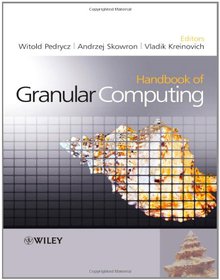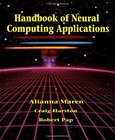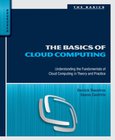Handbook of Granular Computing

Book Details:
| Publisher: | Wiley-Interscience |
| Series: | Wiley , Handbook |
| Author: | Witold Pedrycz |
| Edition: | 1 |
| ISBN-10: | 0470035544 |
| ISBN-13: | 9780470035542 |
| Pages: | 1148 |
| Published: | Aug 25 2008 |
| Posted: | Nov 19 2014 |
| Language: | English |
| Book format: | |
| Book size: | 22.48 MB |
Book Description:
Although the notion is a relatively recent one, the notions and principles of Granular Computing (GrC) have appeared in a different guise in many related fields including granularity in Artificial Intelligence, interval computing, cluster analysis, quotient space theory and many others. Recent years have witnessed a renewed and expanding interest in the topic as it begins to play a key role in bioinformatics, e-commerce, machine learning, security, data mining and wireless mobile computing when it comes to the issues of effectiveness, robustness and uncertainty.The Handbook of Granular Computing offers a comprehensive reference source for the granular computing community, edited by and with contributions from leading experts in the field.Includes chapters covering the foundations of granular computing, interval analysis and fuzzy set theory; hybrid methods and models of granular computing; and applications and case studies.Divided into 5 sections: Preliminaries, Fundamentals, Methodology and Algorithms, Development of Hybrid Models and Applications and Case Studies.Presents the flow of ideas in a systematic, well-organized manner, starting with the concepts and motivation and proceeding to detailed design that materializes in specific algorithms, applications and case studies.Provides the reader with a self-contained reference that includes all pre-requisite knowledge, augmented with step-by-step explanations of more advanced concepts.The Handbook of Granular Computing represents a significant and valuable contribution to the literature and will appeal to a broad audience including researchers, students and practitioners in the fields of Computational Intelligence, pattern recognition, fuzzy sets and neural networks, system modelling, operations research and bioinformatics.
Download Link:
Related Books:
Handbook of Neural Computing Applications
This book draws on the experience of each of the contributors, and covers such topics as neural networks design and development, cognitive science, neurophysiology, pattern recognition, control theory, multiprocessor design, and software and systems development. The applications which they address include robotics, avionics, machine vision, multisource data fusion, adaptive interfaces, and others....
Handbook of Research on Ubiquitous Computing Technology for Real Time Enterprises
After the mainframe and personal computer eras, the third major era in computer science, ubiquitous computing, describes the state of technology in which networked computers would surround every user. Ubiquitous Computing Technology for Real Time Enterprises combines the fundamental methods, algorithms, and concepts of pervasive computing with current innovations and solutions to emerging challenges. This groundbreaking resource systemically covers such salient topics as network and application scalability, wireless network connectivity, adaptability and context-aware computing, information technology security and liability, and human-computer interaction....
The Basics of Cloud Computing
Understanding the Fundamentals of Cloud Computing in Theory and Practice
As part of the Syngress Basics series, The Basics of Cloud Computing provides readers with an overview of the cloud and how to implement cloud computing in their organizations. Cloud computing continues to grow in popularity, and while many people hear the term and use it in conversation, many are confused by it or unaware of what it really means. This book helps readers understand what the cloud is and how to work with it, even if it isn't a part of their day-to-day responsibility. Authors Derrick Rountree and Ileana Castrilloexplains the concepts of cloud computing in practical terms, helping readers understand how to leverage cloud services and provide value to their businesses through moving information to the cloud. The book will be presented a...
2007 - 2021 © eBooks-IT.org



